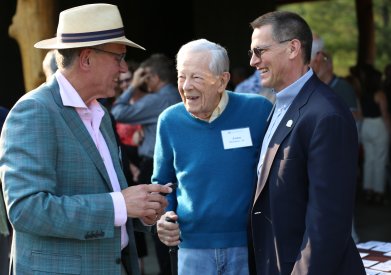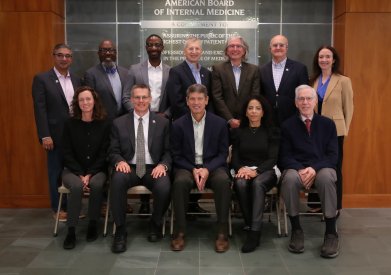Choosing Wisely®: It’s a New Dawn, It’s a New Day
March 9, 2015
I recently attended a presentation by Mark Bonchek of thinkORBIT where I was inspired to reflect on the past three years of Choosing Wisely® and how the campaign reflects a cultural shift both in society at-large and in the way businesses operate. This shift has roots in self-determination theory, complexity theory, co-creation and digital strategies like those espoused by Bonchek.
1) Moving from managed processes TO ones with minimal rules/principles and maximum flexibility
Choosing Wisely gave societies four simple rules to guide them through the creation of their lists of tests and procedures. The recommendations needed to be:
- frequently done or costly;
- evidence-based;
- within the control of the specialty; and,
- created using a transparent process.
2) Moving from control TO autonomy and respect
Choosing Wisely respected the societies’ unique knowledge and mastery of their particular specialty areas, and empowered them to develop their own credible processes for creating their lists.
3) Moving from hierarchical/top-down relationships TO non-hierarchical, bottom-up ones
In the absence of a centralized authority or bureaucracy, more than seventy societies have joined the campaign. They, in turn, solicited the opinions of many physicians in their society, getting them to buy into the campaign during the process.
4) Moving from product creation TO a platform
The Choosing Wisely website contains the lists of recommendations, and resources are available on both the ABIM Foundation and Consumer Reports sites. All parties, including regional health collaboratives, medical associations and delivery systems, use the information on these websites to help them develop their own local strategies for implementing the recommendations and changing attitudes.
5) Moving from one-way communication TO community- and relationship-centered communication
The Choosing Wisely campaign is comprised of over one hundred organizations united by a single purpose. They communicate with each other through learning networks, bulletin boards, newsletters and many websites. This supportive, respectful, relationship-centered community is key in the promotion of shared decision-making conversations between patients and physicians.
6) Moving from competition TO collaboration and co-creation
Rather than having “expert” or oversight organizations develop the lists, the Foundation urged the societies to encourage its members to “co-create” their lists. Volunteer physicians associated with the campaign reviewed the recommendations primarily for clarity. Particularly in the early phase of the campaign, specialty societies worked collaboratively to design the format of the two-page recommendation sheets and the information included (e.g., conflict of interest disclosures).
Physician empowerment and leadership is what is attracting many to this campaign. I think these principles could be applied to all types of desired physician engagement strategies. It is a new culture and a new way of doing the work that is producing such engagement. Organizations that are implementing Choosing Wisely are also using the above principles to design their interventions with great results.
It’s a new dawn – it’s a new day.

Daniel B. Wolfson
EVP and COO, ABIM Foundation


